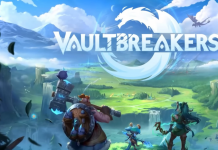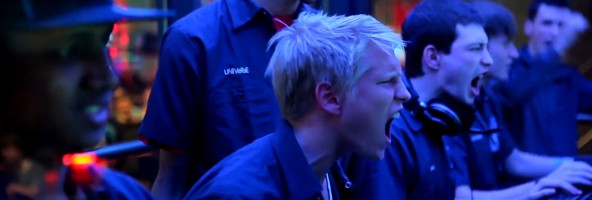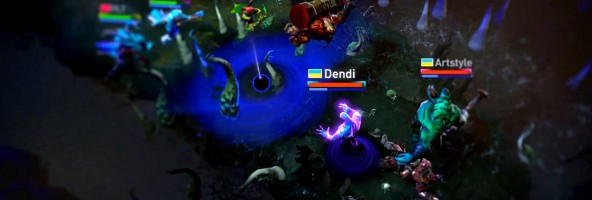Free to Play, The Movie: The Thrill Of Victory And The Agony Of Defeat
I'm an e-sports skeptic. I know, huge tournaments draw huge crowds and have huge prizes. But try to describe “jungling” or “ganking” to a typical American or try to convince them that a skinny 20-year-old is on the same level, professionally, as Peyton Manning or LeBron James, and you'll be met with eye rolls at best or outright derision at worst. E-sports in the West just isn't mainstream enough to generate widespread coverage or even respect.
But if more things like Free to Play are produced, that might happen sooner than you or I think.
Free to Play tracks three professional Dota 2 players as they compete in the International Tournament at Gamescom in August 2011. With $1.6 million in prize money, including $1 million to the winning team, the stakes are the highest they've ever been for an e-sporting event. In true documentary style, cuts to the three players' home lives and snippets of how they achieved what they did are intermingled with the “current” coverage of the tournament.
I've seen my fair share of documentaries, and Free to Play fits right in. As you might expect from Valve, the production quality is top notch, and it's easy to forget that you are, essentially, watching an hour-plus-long movie about video games. It's a finely tuned production that raises the bar for video-game journalism and serves as a fine launchpad for introducing the masses to the world of e-sports.
Hero selection
The three primary characters are Clinton “Fear” Loomis (Oregon), Benedict “hyhy” Lim (Singapore), and Danil “Dendi” Ishutin (Ukraine). Interviews with family members and friends paint a similar picture, one that's familiar to anyone who's ever dreamed of being a pro gamer. The people around them cast aspersions on their prospects of making a living through video games, even openly mocking them at times. Lim had to leave his university during exams to travel to the tournament, which forced him to repeat the entire semester. You'd never hear that kind of story about college football players during Bowl season.
Even making it to a big-time tournament like the International is no guarantee of success. Of the 16 teams who qualify, only eight will leave with prize money, and winnings for the lower tiers of the top eight are “only” in the five-digit range. Divide that by five players, and figure in taxes, and it's not a whole lot to show for thousands of hours of practice and far too many all-night gaming sessions – a factor that resulted in Loomis getting kicked out of his parents' house and being forced to find his own place to live. So why do it, especially when, in one expert's opinion, professional e-sport players are done by the age of 25 or 26? As Lim says, “the chance to be the best in the world at something... you don't get it much in life.”
Unless you're one of the Chinese teams, it would seem. The film touches upon the insanity that is the Asian e-sports scene, with players treated like rock stars and StarCraft teams being more popular than national soccer clubs. The New York Yankees-esque “villain” of the film is the powerhouse Chinese team EHOME, whose manager exemplifies their relentless pursuit of perfection when he says that “anything other than the champion trophy, we will... trash it at the airport.” Glimpses into the full-time training facilities of Asian teams serve as a stark contrast to the three main characters' much simpler – and in Ishutin's case, borderline poverty-stricken – lives.
For the hordes
Speaking of StarCraft, you might notice that it's not Dota 2, and it's the only mention I can recall in the movie of any other video game, though Counter Strike Global Offensive, another Valve title, appears to be briefly visible. One fear I had going into this viewing was that the movie would basically be an hour-long commercial. Obviously, Valve's game is the primary focus, and it's impossible not to make this movie without having it front and center, but I didn't feel like any “Valve is great, Dota 2 is great” messaging was rammed down my throat. I thought of it like I think of the cash shop in a “nice” F2P game; it's there, but the good ones don't shove it in your face at every opportunity.
That, I think, would be one of the key factors in getting e-sports to achieve the kind of prominence in North America and Europe that it has in Asia. Not the promotion of a brand, but the promotion of an idea, that e-sports – whether Dota 2, StarCraft, League of Legends, or whatever – are about team play, hard work, camaraderie, and all the other hallmarks of “real” sports. It's about the people and their stories, and not what pixels are on the screen or whose logo is in the corner. Free to Play can help all of e-sports, by presenting it as a human experience, at which it is shockingly effective. I've never played Dota 2, but I found myself on the edge of my seat watching the final round of the tournament, reacting with exuberance at the lead character's successes and despair at his failures. That's some effective filmmaking.
Pushing forward
Free to Play's got some imperfections, but they're relatively minor. Though the documentary does a fair job of explaining the game, and the focus is properly more on the people more than the game, I wonder how someone totally unfamiliar with MOBAs – the type of person who needs to be convinced of their viability in the mainstream – would grasp the game from watching. Perhaps a one-minute “basic concepts” primer, similar to how early poker broadcasts explained Texas hold 'em to a mass audience, would have been appropriate. Also, the insertion of CG “kill scenes” that re-enact big moments in games where no doubt awesome for fans to watch, but seemed a little jarring and out of place for the uninformed and might again make people think that they're a part of a typical game.
Even if you're not a fan of Dota 2 or MOBAs in general, Free to Play is a solid watch. If you have aspirations of becoming a professional e-sports athlete yourself, it can be both uplifting and depressing. Free to Play gives us a fascinating glimpse at the peaks of exhilaration and the valleys of depression that e-athletes go through, making it akin to documentaries about any competitive activity, whether it's enjoyed by millions or just a few thousand. There may come a day when e-sports hopefuls aren't viewed as weird or throwing their lives away, but we've still got a ways to go before that happens. Productions like Free to Play might help us get there a little faster.
You can watch the full documentary now in the embed below:
About the Author

Jason Winter is a veteran gaming journalist, he brings a wide range of experience to MMOBomb, including two years with Beckett Media where he served as the editor of the leading gaming magazine Massive Online Gamer. He has also written professionally for several gaming websites.
More Stories by Jason WinterRead Next

And then there were 16. Only one-quarter of the games that started on this journey still remain, so we thought we'd reflect on some of the stats we've seen in the first two rounds with a few “best of” lists: Most vot...
You May Enjoy

And they’re all looking for your votes.

The trip to Lahai-Roi is worth it.

These six heroes gained the most significant balance changes as Rogue has entered the game.

A new spin on a classic genre.



I swear, if the documentary was done by Riot or some other company, there would be just as many fanboys from those respective games defending it to the very end.
It all starts somewhere.